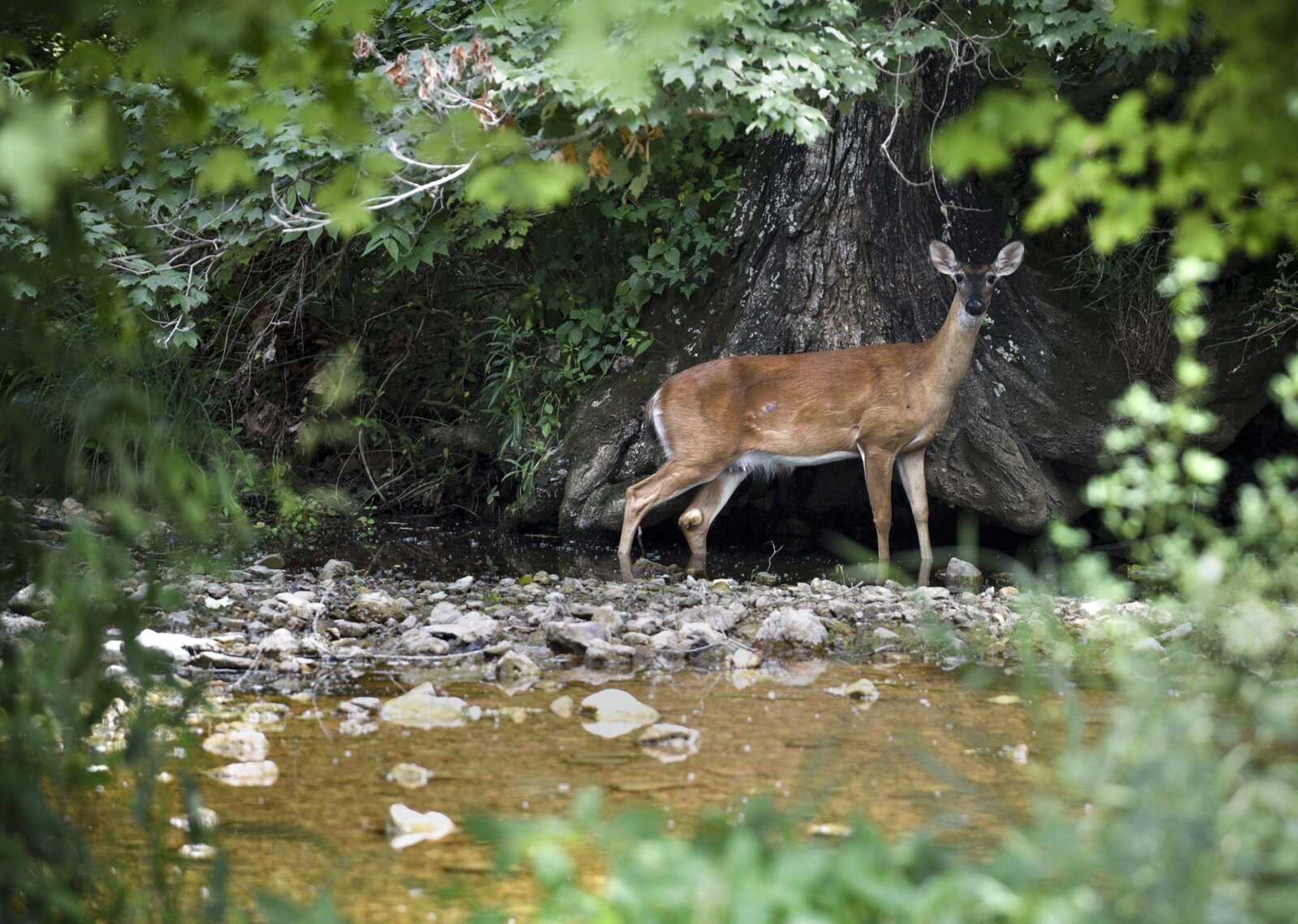MDC's targeted culling a voluntary, effective program against CWD, official says
argeted culling is a hyper-focused effort to manage chronic wasting disease (CWD) in Missouri�s white-tailed deer population, said Matt Bowyer, wildlife regional supervisor with the Missouri Department of Conservation. It�s also a voluntary program aimed directly at confirmed CWD cases and the immediate area, Bowyer said...
argeted culling is a hyper-focused effort to manage chronic wasting disease (CWD) in Missouri�s white-tailed deer population, said Matt Bowyer, wildlife regional supervisor with the Missouri Department of Conservation.
It�s also a voluntary program aimed directly at confirmed CWD cases and the immediate area, Bowyer said.
The closest �core area� to Cape Girardeau is in Ste. Genevieve County, according to a map at www.mdc.mo.gov/cwd.
There are 11 core areas listed on the site, including several in north-central Missouri, some in the greater St. Louis area and one in St. Clair County, in western Missouri.
�It only happens in the areas where we have more than one positive sample (of CWD),� Bowyer said. �It�s not necessarily something where the landowner chooses to participate � the disease chooses where it is.�
It�s after the close of deer hunting season, between mid-January and mid-March, he said.
Where more than two cases of CWD have been found, landowners who hold more than 5 acres in a 1 to 5 mile radius can work with MDC to have deer harvested on their property, Bowyer said.
The goal is to remove as many CWD-positive deer as possible, and the practice has seen success in states including Illinois, Bowyer said � CWD levels were stabilized through the practice.
Targeted culling is not done on a county-wide level, and it�s done only with the cooperation of landowners, Bowyer said.
Limiting the number of deer in an area helps minimize the accumulation of CWD in the environment, Bowyer added.
CWD is caused by a misshapen protein called a prion. Since it�s not a virus or bacteria, it can�t be eradicated by disinfectants or exposure to heat or cold, and can remain viable in the environment � therefore dangerous � for several years.
MDC scientists are monitoring CWD in more than 40 counties in Missouri. These counties may not necessarily have had a positive case within borders, but when a CWD-positive deer is harvested, a 25-mile radius is drawn around it, and counties whose borders touch within that area are added to the monitoring zone.
That�s because young bucks often move up to 25 miles in a single season, and could carry CWD with them, said Barbara Keller, cervid program coordinator, at an Oct. 9 public meeting in Cape Girardeau.
CWD has a long incubation period in deer, meaning a sick animal might not show symptoms for up to 18 months, Keller had said, and besides, the symptoms of CWD are emaciation, drooling and general poor condition, and those symptoms can be caused by several other conditions that are not CWD.
So it�s difficult to tell by looking whether a deer has CWD, she had said.
The �gold standard� of testing for CWD involves the lymph nodes, and it�s far easier to collect those from a deer already harvested rather than capturing a live creature, Keller said at the meeting.
CWD infects the brain and spinal column of cervids, including deer, moose and elk.
MDC recommends people avoid consuming meat of a deer that tests positive for CWD, although the disease has not been shown to infect humans.
Post-season targeted culling accounts for about 4 percent of all CWD samples collected so far, but has resulted in finding about 48 percent of CWD cases in Missouri, Bowyer said, which is why the practice is so important.
About 4,600 total deer have been harvested through winter targeted-culling operations since 2010, according to the MDC website.
If a deer harvested through targeted culling doesn�t test positive for CWD, the landowner may keep it or donate it to the Share the Harvest Program for local food banks and food pantries, the website states, while deer testing positive are properly disposed of by MDC staff or meat processors.
The CWD management zones, which include more than 40 Missouri counties including Bollinger, Cape Girardeau and Perry counties, require mandatory CWD testing for all deer harvested during opening weekend of firearms season.
mniederkorn@semissourian.com
(573) 388-3630
Connect with the Southeast Missourian Newsroom:
For corrections to this story or other insights for the editor, click here. To submit a letter to the editor, click here. To learn about the Southeast Missourian’s AI Policy, click here.











